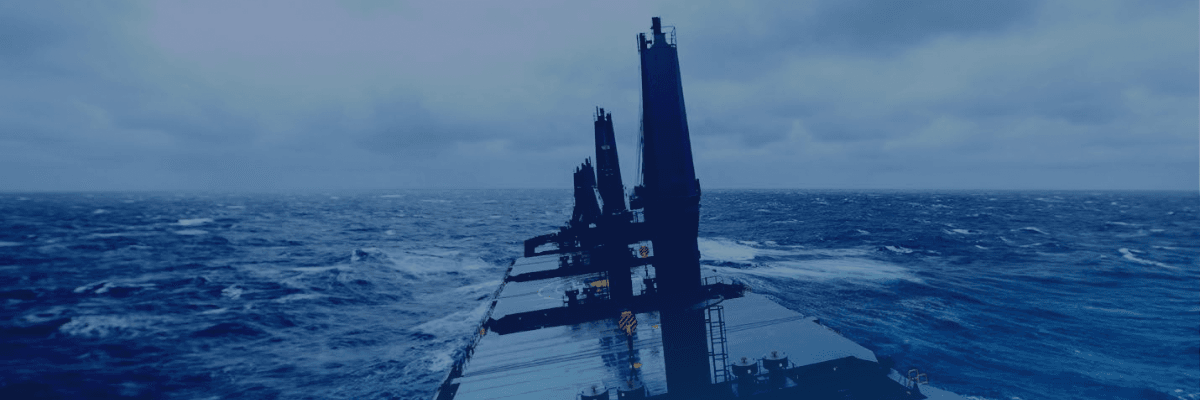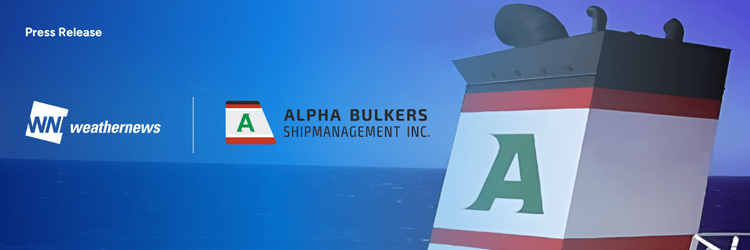The maritime industry faces an increasingly unpredictable and volatile ocean climate due to the ongoing impacts of climate change. As weather patterns become more erratic, the importance of advanced weather routing and voyage optimisation technologies is growing. These technologies must continually evolve to ensure the safety of maritime operations.
“To cope with this reality, in our view, the target is to understand the risk of forecast change using probabilistic forecasting,” she explains. The company is adapting its weather routing strategies in response to climate change. Buhl states that the key to dealing with unpredictable weather patterns lies in the accuracy of weather models over both short- and long-term forecast periods. She notes that climate change has led to unprecedented weather events, which has made this more difficult. WeatherNews hopes that by probabilistic forecasting, a method that uses ensemble models to generate multiple iterations of weather forecasts based on slightly different initial conditions, it can address this challenge.
This mode of forecasting, while not new to meteorology, is relatively novel in the context of voyage optimisation. This approach involves running numerous iterations of weather models to create a range of possible outcomes, which can then be analysed to determine the likelihood of specific weather events occurring.
“We can then use statistical analysis to understand from the output the likelihood of certain weather events occurring,” states Buhl. “We can also understand from the output if there is good agreement among the ensemble members, and use that information to determine our confidence in the forecast, as well as how the forecast may change.”
Better-informed decisions
This method helps Weathernews understand forecast volatility and make more informed decisions about route optimisation. For example, probabilistic forecasts can calculate the likelihood of wave conditions exceeding certain thresholds, allowing the company to create optimised routes based on different risk tolerance levels. This approach not only addresses the volatility in forecasts but also empowers ship operators to tailor routes according to their specific risk preferences.
Weathernews Inc. was founded in 1986 by Hiro Ishibashi, inspired by a tragic incident in 1970 at the port of Onahama, Japan, where a cargo vessel sank due to an explosive low-pressure system, resulting in the loss of 15 crew members. Reflecting on this event, Ishibashi believed that better weather information could have prevented the accident.
Since its inception, the company has expanded its services to cover various industries, but its core mission remains focused on safeguarding sailors' lives. The company’s growth trajectory includes significant milestones such as the establishment of the Global IceCenter in 2006 to support Arctic Ocean routing and the launch of the ‘AI Disaster Prevention Council’ in 2019 to enhance disaster preparedness through artificial intelligence. Weathernews has also played a pivotal role in various sectors, from aviation weather services to realtime satellite imagery for TV stations.
Algorithms challenged by climate change
Climate change poses numerous challenges for weather routing, particularly due to increased volatility and the occurrence of extreme weather events. Traditional optimisation algorithms often struggle with these changes, as they cannot anticipate forecast fluctuations and produce inconsistent outputs with each update. “Many existing optimisation algorithms fail in this respect – they can only optimise based on the forecast data they have in front of them, they cannot anticipate how the forecast will change, and therefore produce a different output with each forecast update,” says Buhl.
“Understanding how forecasts can change can help the meteorologists developing voyage optimisations, and also lays a foundation for more automated voyage optimisation algorithms, that can account for forecast change, which we have developed,” she adds.
Weathernews runs its own global weather model, incorporating data from weather balloons, aircraft reconnaissance, proprietary observation networks and reports from vessels and aircraft. This comprehensive data integration helps mitigate the impact of data scarcity in certain regions and enhances the precision of weather forecasts. By assimilating a wide range of observational data, Weathernews can produce more accurate and reliable forecasts, which are crucial for effective weather routing.
As vessel automation progresses, the company is also adapting its services to meet the evolving needs of the maritime industry. “One of the important things we provide to our users is risk communication – we want to give as much information to our users in order to help them make a decision about the operation of their vessels as easily as possible,” says Buhl. “In this respect, sharing data and scenarios so that the ship master or operator can see the possible outcomes that both ensure the safety of the vessel and match an outcome to their business needs in the simplest way possible, but also using tools, such as probabilistic forecast data, to quantify risk in order to make good decisions.”
Weathernews has also joined an initiative by The Nippon Foundation’s Autonomous Ship Programme to develop technology to support autonomous vessels. This combines AI with probabilistic forecast data to quantify risks and optimise routes. This ongoing collaboration is part the Nippon Foundation’s MEGURI2040 Fully Autonomous Ship Project, which aims to understand the realities of vessel automation and upgrade the types of services provided to support these advancements.
The regulatory landscape in the maritime industry is continually evolving, particularly with the push towards decarbonisation. The company hopes to assist its customers in understanding and improving their environmental impact, ensuring compliance with regulations and optimising for specific outcomes, such as the Carbon Intensity Indicator (CII). Buhl points out that data quality is a significant challenge in this context, and Weathernews is focused on enhancing reporting and data collection to support regulatory compliance and environmental sustainability.
Wind-assisted propulsion: new opportunities and challenges
The rise of wind-assisted propulsion technologies in the maritime industry also presents new opportunities and challenges for weather routing. These technologies alter the dynamics of route optimisation, requiring a deep understanding of how they are deployed and their practical effects on vessel performance. According to Buhl, this challenge is one of the most interesting that the weather routing sector faces today, as it challenges many preconceived notions of how voyages are efficiently optimised.
“Voyage optimisation has always tried to balance placing a vessel in favourable conditions versus adding distance to a voyage, this changes the dynamic effect of those favourable conditions, and changes how those factors can and should be balanced,” Buhl states. “One important point is to understand deeply how wind-assisted propulsion is utilised practically on board, and from there, identifying what kind of tactics and strategies should supplement the voyage optimisation process to get the best effect.”
As a result of this Weathernews is exploring ways to integrate these factors into its routing algorithms, working with collaborators to model the performance of wind-assisted vessels and optimise sailing conditions to maximise their benefits.
The future of weather routing technology in the maritime sector will be ultimately be shaped by several key factors. The increasing volatility of weather patterns due to climate change will necessitate more advanced and adaptable forecasting methods. Probabilistic forecasting, as employed by Weathernews, could become more prevalent, allowing for more accurate and reliable route ptimisations. The progression of vessel automation will likewise require weather routing services to provide more detailed risk communication and support for autonomous navigation.
The push towards decarbonisation and the adoption of wind-assisted propulsion technologies will drive the need for innovative routing algorithms that can balance environmental sustainability with operational efficiency. Weathernews is positioning itself well to lead these advancements, leveraging expertise in weatherforecasting and data integration to develop novel solutions for the maritime industry.
By Tom Barlow-Brown, Royal Institute of Naval Architects



